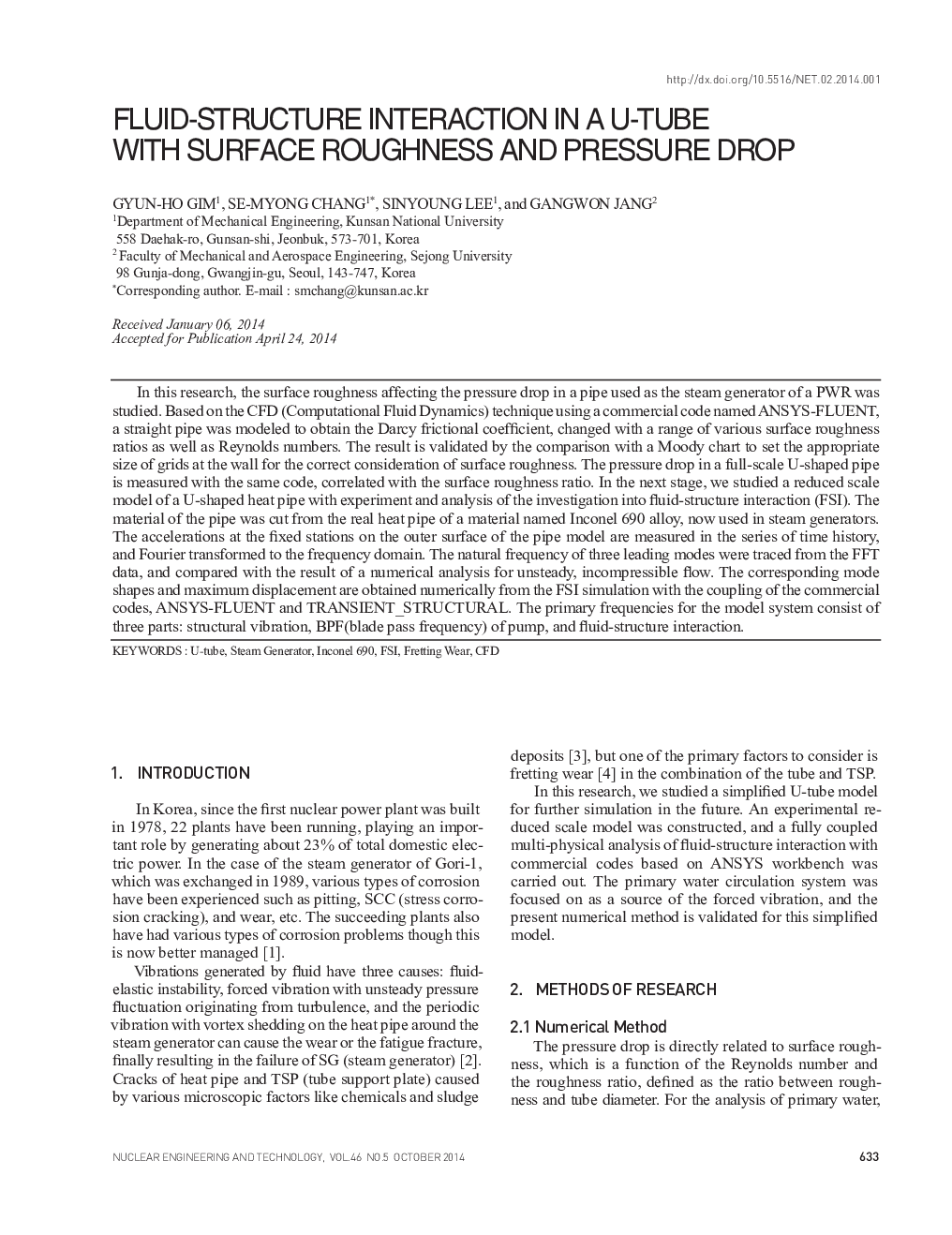| Article ID | Journal | Published Year | Pages | File Type |
|---|---|---|---|---|
| 1740207 | Nuclear Engineering and Technology | 2014 | 8 Pages |
In this research, the surface roughness affecting the pressure drop in a pipe used as the steam generator of a PWR was studied. Based on the CFD (Computational Fluid Dynamics) technique using a commercial code named ANSYS-FLUENT, a straight pipe was modeled to obtain the Darcy frictional coefficient, changed with a range of various surface roughness ratios as well as Reynolds numbers. The result is validated by the comparison with a Moody chart to set the appropriate size of grids at the wall for the correct consideration of surface roughness. The pressure drop in a full-scale U-shaped pipe is measured with the same code, correlated with the surface roughness ratio. In the next stage, we studied a reduced scale model of a U-shaped heat pipe with experiment and analysis of the investigation into fluid-structure interaction (FSI). The material of the pipe was cut from the real heat pipe of a material named Inconel 690 alloy, now used in steam generators. The accelerations at the fixed stations on the outer surface of the pipe model are measured in the series of time history, and Fourier transformed to the frequency domain. The natural frequency of three leading modes were traced from the FFT data, and compared with the result of a numerical analysis for unsteady, incompressible flow. The corresponding mode shapes and maximum displacement are obtained numerically from the FSI simulation with the coupling of the commercial codes, ANSYS-FLUENT and TRANSIENT_STRUCTURAL. The primary frequencies for the model system consist of three parts: structural vibration, BPF(blade pass frequency) of pump, and fluid-structure interaction.
